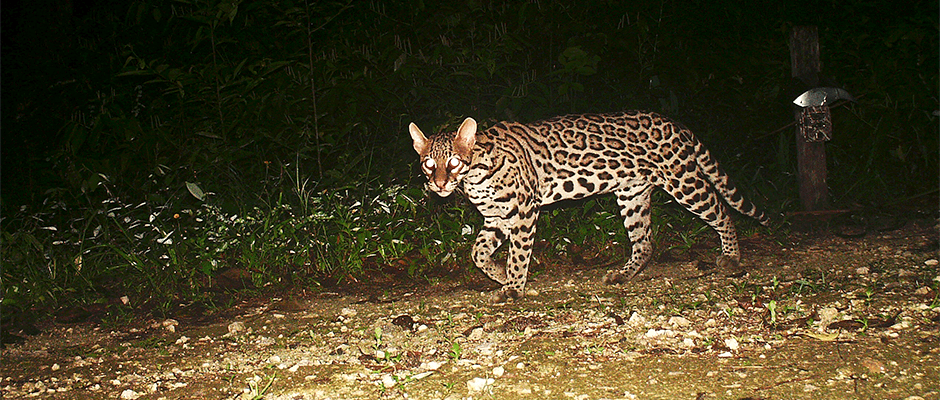Share this article
JWM: Ocelots populations appear stable in Belize
Ocelot (Leopardus pardalis) populations in Belize seem to be relatively stable across time and sites, according to recent research.
“We did have enough evidence that populations have not significantly declined over time,” said TWS member Christopher Satter, a PhD student in the Department of Fish and Wildlife Conservation at Virginia Tech. Satter led the recent study published in the Journal of Wildlife Management. “But it is possible that our models lacked enough statistical power to detect a slow, gradual decline in the population.”
In the study, Satter and his colleagues used camera traps to study the medium-sized cats. “In Belize, in general, the smaller cats and medium-sized cats get less attention than the bigger cats,” Satter said. “We wanted to get more information back in the literature.” Satter said latest previous ocelot studies were done 10 years ago with older methods. Since those methods didn’t incorporate where the cats were captured, Satter said, density estimates were less precise.
Satter and his colleagues looked at ocelot density across multiple sites over 12 years using camera trap detection and spatial capture-recapture methods. “Ocelots were the perfect animal for that because of their unique individual spot patterns, which makes it easy to tell them apart from one another with high certainty,” Satter said.
The team found about 8.5 to 13 ocelots per 100 kilometers in broadleaf rainforest sites and only about one per 100 kilometers in the pine forest site. Satter said he expected more ocelots in broadleaf habitats since they have been shown to prefer closed canopy cover and broadleaf habitat.
Because parks are pretty well managed, Satter said, he didn’t expect to see much of an ocelot decline over time. Belize is roughly 63 percent forested, and 43 percent of the mainland is comprised of protected areas and uninhabited by humans, Satter said. Even more beneficial to ocelots, there are only about 14 people per square kilometer.
But ocelots aren’t out of the woods — or forest. Satter said Belize also has the fastest human population growth rate in Central America. “So in the future, we could see protected areas become further fragmented,” he said. Also on the rise may be road collisions, infrastructure problems and human-wildlife conflicts, particularly with farmers who risk losing chickens to predators.
Satter suggests continuing to monitor ocelots, especially since they’re a long-lived species. “The more years you have looking at a species that lives long like that, the more power to detect increases or decreases through time,” he said.
TWS members can log in to Your Membership to read this paper in the Journal of Wildlife Management. Go to Publications and then Journal of Wildlife Management.
Header Image: Researchers used camera traps to determine spot patterns and population density of ocelots in Belize. ©Virginia Tech and the Department of Fish and Wildlife Conservation








